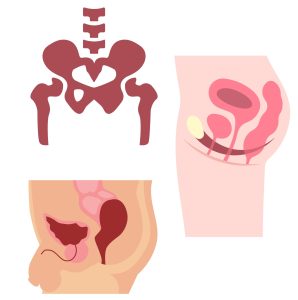Pelvic Floor
Pelvic Floor

Learning Objectives
- Describe the different anatomical layers of the pelvic floor, including the superficial, intermediate, and deep layers.
- Discuss the specific muscles within each layer and their locations in relation to the pelvic cavity.
- Explain the role of pelvic floor muscles in providing support to pelvic organs, including the bladder, uterus (in females), and rectum.
- Discuss how these muscles contribute to stability in posture and movement, particularly during activities such as lifting or exercising.
- Examine the involvement of pelvic floor muscles in bodily functions, such as urination, defecation, and sexual function.
- Recognize the impact of pelvic floor muscle dysfunction on health, including conditions like urinary incontinence, pelvic organ prolapse, and sexual dysfunction.
- Discuss strategies for strengthening and rehabilitating pelvic floor muscles, emphasizing their importance in overall health and wellness.
- Apply understanding of pelvic floor anatomy and function to assess and address pelvic health issues in various populations.
- Formulate personalized strategies for improving pelvic floor function in clients or patients, considering individual needs and goals.
